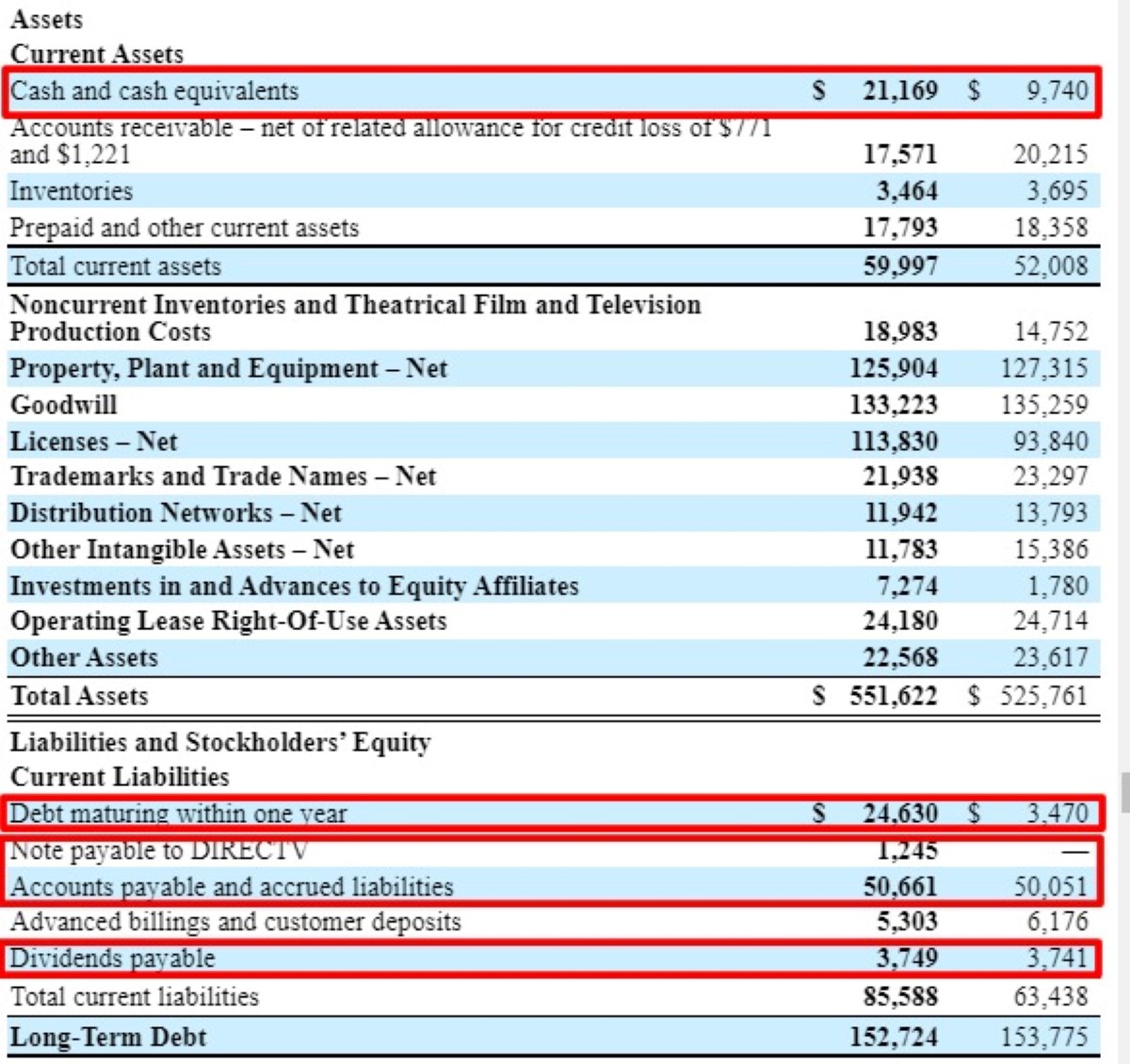

Finance
What Are Short Term Bonds
Published: October 12, 2023
Looking to invest in short term bonds? Learn what short term bonds are and how they can help you reach your financial goals. Find out more in our comprehensive guide.
(Many of the links in this article redirect to a specific reviewed product. Your purchase of these products through affiliate links helps to generate commission for LiveWell, at no extra cost. Learn more)
Table of Contents
Introduction
When it comes to investing, there are countless options available, catering to different risk appetites and investment goals. One avenue that investors often explore is the world of bonds. Bonds are fixed income securities that are issued by governments, municipalities, and corporations to raise capital. They offer a steady stream of income in the form of interest payments.
Within the broad category of bonds, there are various types with different durations and levels of risk. One such type is short-term bonds. As the name suggests, these bonds have a shorter maturity period compared to other types of bonds. They typically mature within one to five years, making them an attractive option for investors looking for relatively quick returns or those with a low tolerance for risk.
In this article, we will delve into the world of short-term bonds, exploring their definition, features and characteristics, benefits, risks, and considerations. We will also discuss how to invest in short-term bonds and compare them to other investment options.
Definition of Short-Term Bonds
Short-term bonds, also known as short-term fixed income securities, are a type of debt instrument with a relatively short duration. These bonds have a maturity period of typically one to five years, which distinguishes them from long-term bonds that have a maturity of more than five years. The shorter duration of short-term bonds makes them less sensitive to interest rate fluctuations compared to their long-term counterparts.
Short-term bonds are issued by various entities, such as governments, municipalities, and corporations, to raise capital for a specific period. They are typically issued with a fixed interest rate, which is the return that bondholders receive as compensation for lending their money. The interest rate on short-term bonds is usually lower compared to long-term bonds due to the shorter timeframe involved.
These bonds are considered to be relatively safer than longer-term bonds as they have a shorter maturity period. This means that the borrower has a shorter timeframe to default on their obligations. However, it is important to note that the safety and risk associated with short-term bonds can vary depending on the issuer’s creditworthiness. Bonds issued by stable governments or highly-rated corporations are generally viewed as safer investments.
Short-term bonds come in various forms, including Treasury bills, commercial paper, certificates of deposit (CDs), and municipal notes. Each type has its own characteristics and features, but they all fall under the umbrella of short-term fixed income securities.
Features and Characteristics of Short-Term Bonds
Short-term bonds possess several features and characteristics that make them an attractive investment option for certain individuals. Let’s delve into some of the key features and characteristics of short-term bonds:
- Short Maturity: The primary characteristic of short-term bonds is their short maturity period, typically ranging from one to five years. This means that investors can expect their principal investment to be returned within a relatively short timeframe.
- Lower Risk: Short-term bonds are generally considered to be less risky than long-term bonds. This is due to the shorter duration, which reduces the exposure to interest rate fluctuations and decreases the probability of default by the issuer.
- Steady Income: Short-term bonds offer a steady stream of income in the form of regular interest payments. The interest rates on these bonds are typically fixed, providing investors with a predictable source of income.
- Liquidity: Short-term bonds are usually more liquid compared to their long-term counterparts. This means that investors can easily buy or sell these bonds on the secondary market, providing flexibility and the ability to access their invested funds when needed.
- Diversification: Short-term bonds can be an effective tool for diversifying an investment portfolio. By including bonds with different maturities, investors can balance the risk and return in their portfolio and mitigate potential losses.
- Inflation Protection: Some short-term bonds, such as Treasury Inflation-Protected Securities (TIPS), offer inflation protection. The interest payments and principal value of these bonds are adjusted to keep pace with inflation, helping to safeguard the purchasing power of investors’ funds.
These features and characteristics make short-term bonds an appealing option for risk-averse investors seeking stable income and capital preservation. However, it is essential to carefully assess individual investment goals, risk tolerance, and market conditions before making any investment decisions.
Benefits of Investing in Short-Term Bonds
Investing in short-term bonds offers several benefits that make them an attractive option for investors. Let’s explore some of the key advantages of investing in short-term bonds:
- Stability and Predictability: Short-term bonds provide investors with stability and predictability due to their shorter maturity period and fixed interest rates. This can be particularly beneficial for individuals seeking a steady stream of income and capital preservation.
- Lower Interest Rate Risk: Short-term bonds are less sensitive to interest rate fluctuations compared to long-term bonds. As a result, investors are exposed to lower interest rate risk, which can help protect their investment returns.
- Liquidity: Short-term bonds are generally more liquid compared to longer-term bonds. This means that investors can easily buy or sell these bonds on the secondary market, allowing for quick access to funds if needed.
- Diversification: Including short-term bonds in an investment portfolio can help diversify risk. By spreading investments across different types of bonds with varying durations, investors can reduce the impact of market volatility on their overall portfolio.
- Capital Preservation: Short-term bonds are often considered a relatively low-risk investment option. The shorter maturity period and lower sensitivity to interest rate changes help preserve the invested capital, making them suitable for risk-averse investors.
- Income Generation: Short-term bonds provide a consistent income stream in the form of regular interest payments. These interest payments can help investors meet their financial goals and cover expenses.
It is important to note that the benefits of investing in short-term bonds may vary depending on individual circumstances and market conditions. While short-term bonds offer stability and income generation, they may not provide the same level of long-term growth potential as other investment options. Therefore, investors should carefully evaluate their investment objectives, risk tolerance, and overall portfolio diversification before allocating funds to short-term bonds.
Risks and Considerations of Short-Term Bonds
While short-term bonds offer several benefits, it is important for investors to be aware of the potential risks and considerations associated with this type of investment. Let’s explore some of the key risks and considerations of investing in short-term bonds:
- Interest Rate Risk: Although short-term bonds are less sensitive to interest rate fluctuations compared to long-term bonds, they are still subject to some degree of interest rate risk. If interest rates rise, the value of existing short-term bonds may decline, potentially resulting in capital losses for investors who sell the bonds before maturity.
- Inflation Risk: Short-term bonds may be vulnerable to inflation risk. If inflation rates rise significantly, the purchasing power of the interest income and principal repayment may be eroded over time. Therefore, it is important for investors to consider the potential impact of inflation on their overall investment returns.
- Credit Risk: Short-term bonds issued by governments, municipalities, or corporations are not completely risk-free. There is always a risk of default by the issuer, which could result in missed interest payments or even loss of principal. Investors should assess the creditworthiness of the issuer before investing in short-term bonds.
- Liquidity Risk: While short-term bonds are generally more liquid than long-term bonds, there may be instances where liquidity becomes an issue. If market conditions deteriorate or there is limited demand for a specific bond, investors may face difficulty in selling their bonds at a desirable price.
- Reinvestment Risk: When short-term bonds mature or interest payments are received, investors face reinvestment risk. This refers to the risk of reinvesting funds at a lower interest rate, potentially resulting in lower overall returns.
It is crucial for investors to carefully consider these risks and factors before investing in short-term bonds. Conducting thorough research, diversifying investments, and regularly reviewing and monitoring the portfolio can help mitigate these risks and optimize the potential returns from short-term bond investments.
How to Invest in Short-Term Bonds
Investing in short-term bonds can be a relatively straightforward process. Here are some steps to consider when looking to invest in short-term bonds:
- Educate Yourself: Start by educating yourself about the different types of short-term bonds available in the market. Understand their characteristics, risks, and potential returns to make informed investment decisions.
- Set Investment Goals: Determine your investment goals and objectives. Consider factors such as desired return, risk tolerance, and investment horizon. This will help you select the right type of short-term bonds to meet your financial needs.
- Research Bond Issuers: Conduct thorough research on the issuers of short-term bonds. Assess their creditworthiness, financial stability, and reputation. Look for entities with solid credit ratings to minimize the risk of default.
- Choose the Right Brokerage: Find a reputable brokerage or financial institution that offers access to a wide range of short-term bonds. Compare commission fees, trading platforms, and customer service to make an informed decision.
- Diversify Your Portfolio: Consider diversifying your short-term bond investments to spread risk. Invest in bonds issued by different entities and industries to minimize the impact of potential defaults or economic downturns.
- Monitor Market Conditions: Keep an eye on market conditions and interest rate movements. Short-term bond prices are inversely related to interest rates, so it is important to be aware of any potential fluctuations that could impact your investment returns.
- Consult with a Financial Advisor: If you are new to bond investing or unsure about the best approach, consider consulting with a financial advisor. They can provide personalized advice and guidance based on your individual financial situation and investment goals.
It is important to note that investing in short-term bonds involves risks, and returns may vary. It is advisable to carefully review all relevant information, including the bond prospectus, before making any investment decisions. Regularly monitor your investments and reassess your portfolio as your financial goals and market conditions change.
Comparison of Short-Term Bonds with Other Investments
When considering investment options, it is essential to compare the characteristics and potential returns of different asset classes. Let’s compare short-term bonds with other common investment options to understand their relative advantages and disadvantages:
- Stocks: Compared to short-term bonds, stocks have potential for higher returns but also come with higher risk and volatility. Stocks offer ownership in a company and the potential for capital appreciation, but they lack the fixed income stream and stability provided by short-term bonds.
- Long-Term Bonds: Long-term bonds have a longer maturity period than short-term bonds, typically over five years. While they may offer higher interest rates, they are more vulnerable to interest rate fluctuations, resulting in increased interest rate risk. Long-term bonds are generally suitable for investors with a longer investment horizon and a higher risk tolerance.
- Cash and Savings Accounts: Cash and savings accounts offer high liquidity and low risk but provide minimal returns. Short-term bonds generally offer higher yields and income potential compared to these options, making them more attractive for investors seeking higher returns without taking on excessive risk.
- Certificates of Deposit (CDs): CDs are similar to short-term bonds, offering a fixed interest rate and a specific maturity period. However, CDs are often issued by banks and have lower liquidity compared to short-term bonds. Additionally, the interest rates on CDs are typically lower than those offered by short-term bonds.
- Exchange-Traded Funds (ETFs): ETFs provide a diversified investment approach, allowing investors to gain exposure to a variety of asset classes, including bonds. Short-term bond ETFs can provide investors with a convenient way to invest in a diversified portfolio of short-term bonds. However, ETFs are subject to market fluctuations and may have management fees to consider.
The choice between short-term bonds and other investment options depends on individual investment goals, risk tolerance, and time horizon. It is important to carefully evaluate the pros and cons of each option and consider how they align with your overall investment strategy. Diversification across asset classes can be beneficial in managing risk and maximizing potential returns.
Conclusion
Short-term bonds can be a valuable addition to an investment portfolio, offering stability, predictable income, and capital preservation. Their shorter maturity period and lower sensitivity to interest rate fluctuations make them attractive to risk-averse investors or those looking for a steady stream of income in the short term.
Investing in short-term bonds provides several benefits, including lower interest rate risk, liquidity, diversification opportunities, and the generation of consistent income. However, it is important to be aware of the potential risks associated with these bonds, such as credit risk, inflation risk, and reinvestment risk. Careful consideration and research should be undertaken to mitigate these risks and optimize returns.
When comparing short-term bonds with other investment options, it is important to assess individual investment goals and risk tolerance. Stocks offer the potential for higher returns but come with greater volatility, while long-term bonds may provide higher interest rates but are more sensitive to interest rate changes. Cash and savings accounts may offer low risk but minimal returns, and CDs offer a similar fixed-income approach with lower liquidity.
Ultimately, the decision to invest in short-term bonds should be a well-informed one, based on thorough research and understanding of personal financial goals. Diversification across asset classes and regular monitoring of market conditions are important aspects of managing a balanced investment portfolio.
In summary, short-term bonds can play a pivotal role in a well-diversified investment strategy, providing stability, income generation, and capital preservation. By carefully assessing individual risk tolerance and investment goals, investors can effectively incorporate short-term bonds as part of their overall portfolio and potentially reap the rewards they offer.














